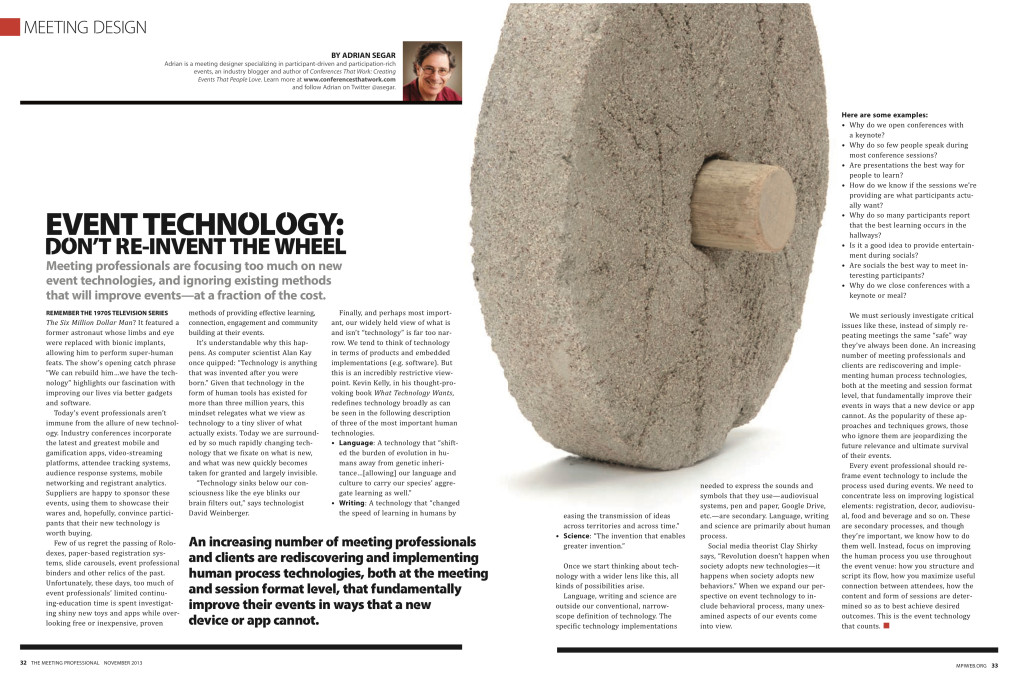 My November 2013 column for The Meeting Professional: Meeting Professionals International’s member magazine.
My November 2013 column for The Meeting Professional: Meeting Professionals International’s member magazine.
Related posts:
- Comfort, cost, and…casters? Better chairs for your conference Can we make better conference chairs? Ask meeting attendees what’s most important about the chairs they sit in at an event and they’ll inevitably say they should be comfortable. Ask...
- Why Conferences That Work continually evolve Conferences That Work continually evolve. “Our basic ideas about design have been based on Newton, says Tim [Brown of Ideo]. Design assumes the ability to predict the future based on...
- You can’t please everyone. Get used to it. You can’t please everyone. During my workshops on participant-driven and participant-rich events, people sometimes ask: “But what do you do with people who won’t participate.” When we explore what’s behind...
- How the Apple Watch improves my life All the ways that the Apple Watch Series 3 improves my life....
- Two ways to take a hard look at conference evaluations Let’s take a hard look at conference evaluations. Seth Godin wrote a great blog post about survey questions, and applying two of his insights will improve any conference evaluation. First, ask yourself...
- When the audience can’t stop talking about what they did Having people unwilling to leave after a session is over is a sign of success. This is an example of viral work: what happens when the audience can't stop talking...

This article limits technology examples
to apps, registration and attendee engagement. The overall manual process of
procuring suppliers and reconciling invoices has been automated using
technology in almost every other spend category for over 10 years and the
meeting and event spend sector is lagging way behind, especially for an
industry that currently requires far more manual work then “office supplies” to
procure and pay. Event Commerce is the automation of buying and selling
meetings and events, a technology that actually frees up the planner to be more
strategic and spend more time on the human elements that technology can’t
replace because it automates the back office saving millions of dollars.
Thanks for sharing another example of “new” technology, Talia. I think there are (and will probably always be) plenty of new opportunities for conventionally-defined technology like yours to improve meetings and events. Rather, my article attempts to widen our framing of technology so as to include powerful existing concepts that are in danger of being overlooked.